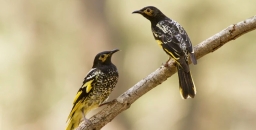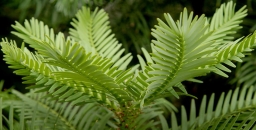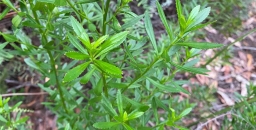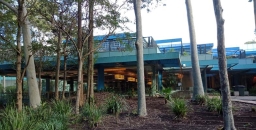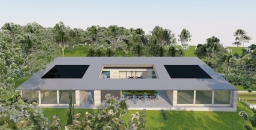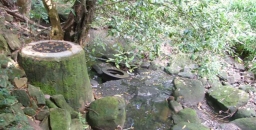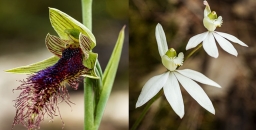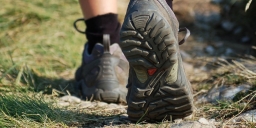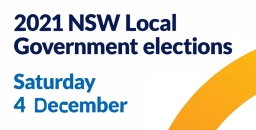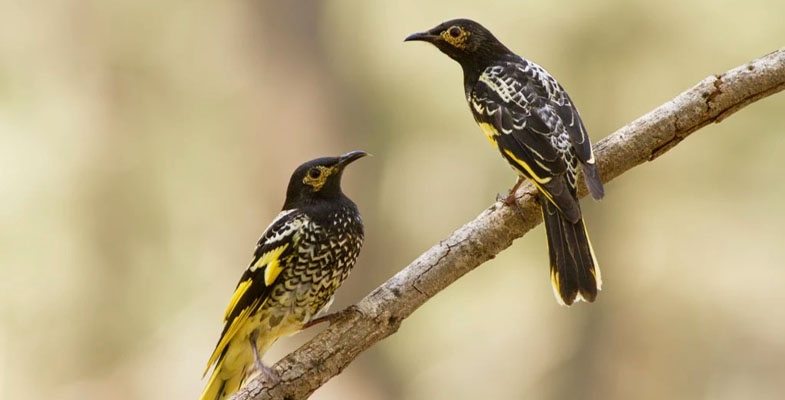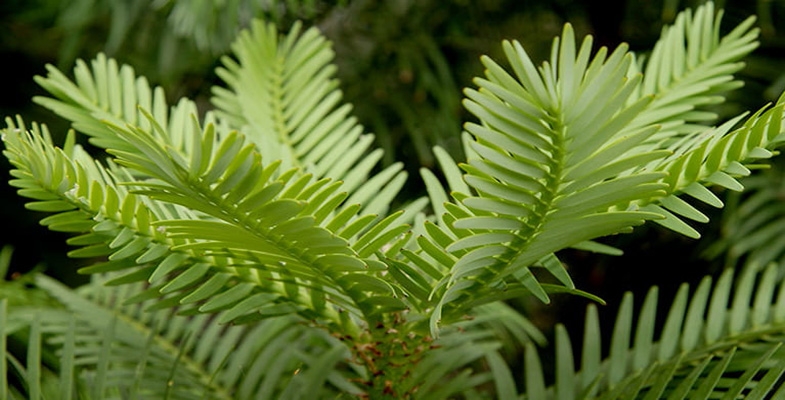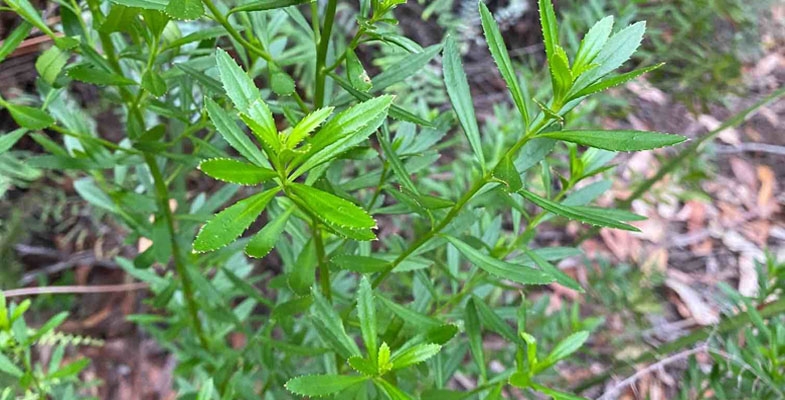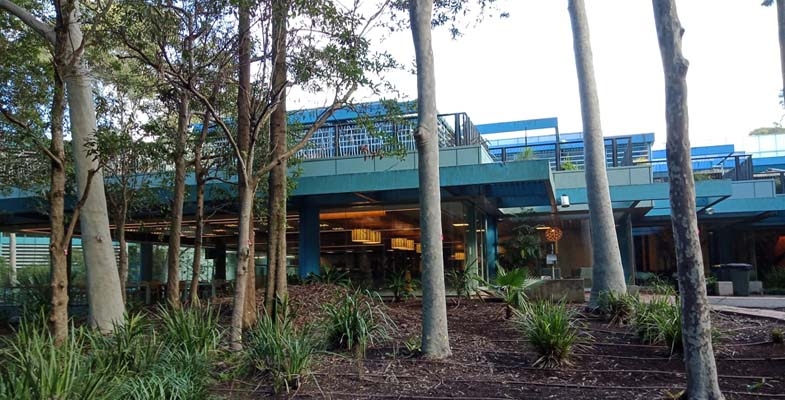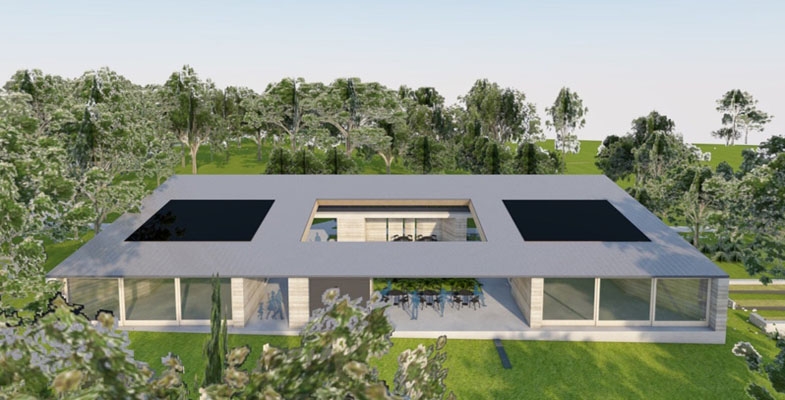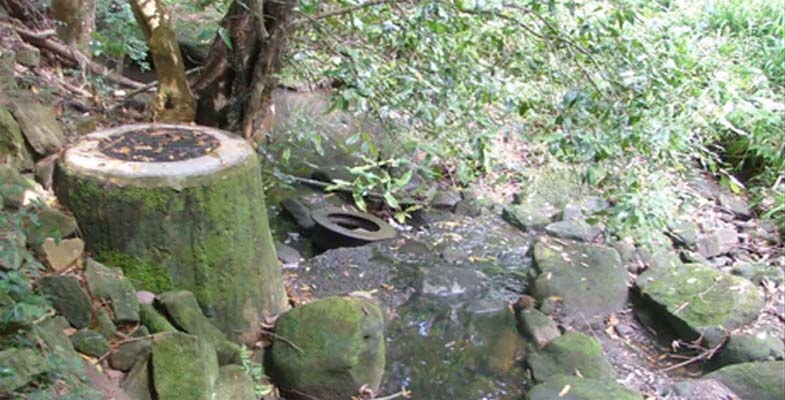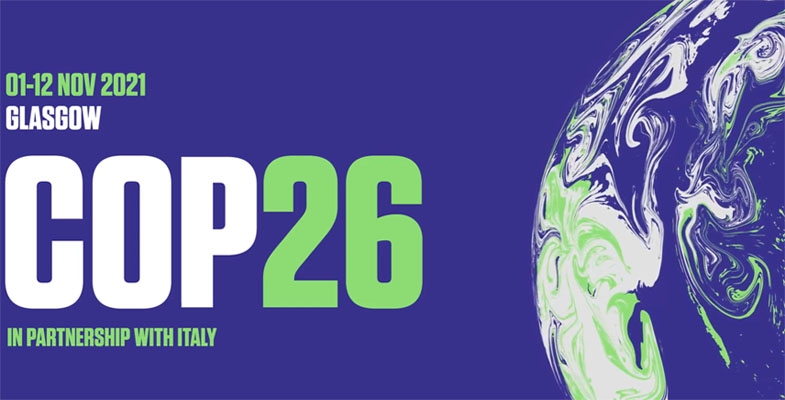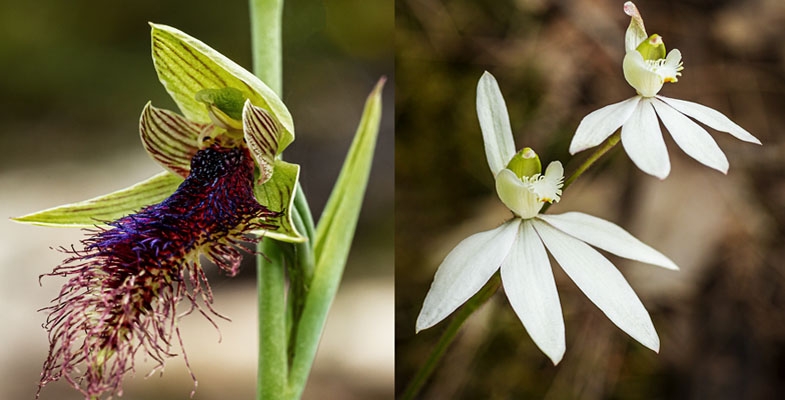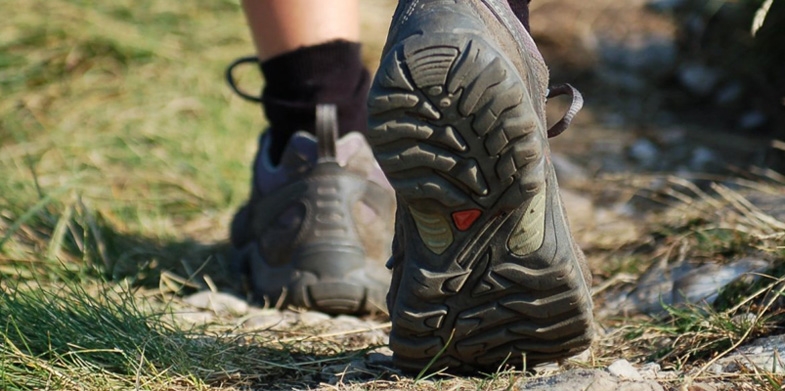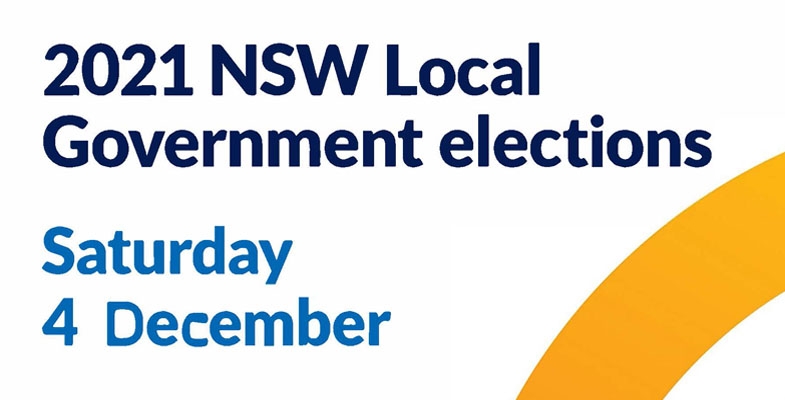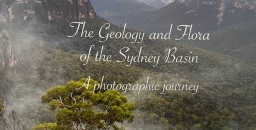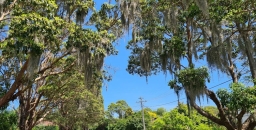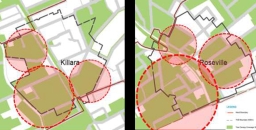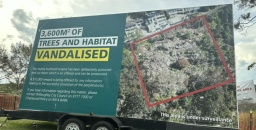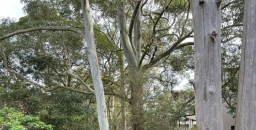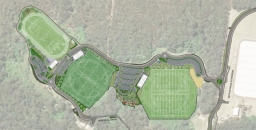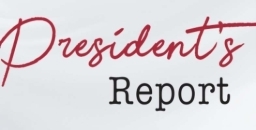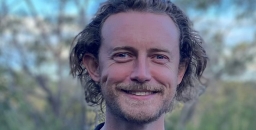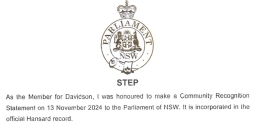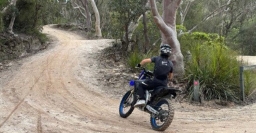STEP Matters 212
- Default
- Title
- Date
- Random
- Earlier this week, NSW Environment Minister Matt Kean claimed he was ‘fortressing’ threatened species from extinction within our national parks…Read More
- The NSW Bushfire Inquiry recognised the need to identify the most important natural and cultural assets in the national park…Read More
- It is interesting to note that there are some local asset of intergenerational significance (AIS) sites protecting an unusual plant,…Read More
- The Morrison government has proposed scrapping recovery plans for almost 200 endangered species and habitats. Recovery plans are documents that…Read More
- In the previous issue of STEP Matters we provided information on what wasn’t happening with the Mirvac development on the…Read More
- The St Ives Showground and Precinct Lands are a complex mix of developed areas with a long history within a…Read More
- My concern is that weeds occur along all land that has been disturbed in otherwise pristine bushland areas. These are…Read More
- Under the Paris climate change agreement the majority of countries have made pledges to get their greenhouse gas emissions down…Read More
- We have all been out and about this spring and have made some new discoveries of orchids, some quite rare…Read More
- Although most of our walks and talks have had to be cancelled there has been lots of activity behind the…Read More
- To help STEP members learn more about the environmental credentials of candidates in Hornsby and Ku-ring-gai we sent them a…Read More
A Kean eye for extinction: minister’s ‘fortress’ for endangered species crumbles on closer inspection
Earlier this week, NSW Environment Minister Matt Kean claimed he was ‘fortressing’ threatened species from extinction within our national parks reserve system. His announcement was to declare 221 areas of threatened species habitat as Assets of Intergenerational Significance (AIS).
Great! Environment groups joined in congratulating Kean on his ‘intergenerational’ vision before looking at it in any detail.
I wanted to know what exactly the announcement was meant to achieve. The minister’s media headline sounded purposeful: ‘Zero extinctions targets set for NSW National Parks’. But how exactly did the announcement go that further step needed to protect our threatened species in National Parks? After all, aren’t National Parks established to be a ‘fortress’ against threatened species extinction in the first place?
On the day of the announcement, I could find little reference to the exact species or habitats that had been protected. I then asked around my contacts for the ministerial press release. Bingo – a small link in the PDF press release sent me to an online map. It is fair to say, what I stumbled across in that map shocked me.
The most threatened bird species in NSW is the critically endangered Regent Honeyeater. Its habitat in the Burragorang, Capertee and Hunter valleys were not listed as an ‘intergenerational asset’. A curious omission given the $1 million in funding the NSW government has thrown at the species over the past six years.
‘Threatened species fortress’: zero extinction goal for national parks
I then turned my attention to the Blue Mountains, an area where my family has spent decades bushwalking. One of the rarest eucalypt species in the Greater Blue Mountains World Heritage Area, the vulnerable Camden white gum, was also left off the list. There are only two known populations of the species left on the planet. Again, a very strange omission.
Then, in one corner of the Blue Mountains intergenerational asset map, I finally spotted two lesser-known endangered species that had been listed – the Kowmung hakea and Solanum armourense, tenacious little shrubs that grow in the depths of the southern Blue Mountains wilderness. Curiously, only one half of the population for each of these species had been declared an AIS.
I was starting to ask the question. How could such a well-instructed minister simply overlook these species and their known habitats?
It then dawned upon me that these species shared a common fate. Matt Kean’s government plans to flood their World Heritage National Park habitat by raising the Warragamba Dam wall. Indeed, it has been estimated that half the remaining global populations of both the Regent Honeyeater and the Camden White Gum will be drowned by the dam project. And the populations of those little endangered shrubs conveniently left off the intergenerational asset list are also set to go under.
The fact is, Kean has consigned these species to extinction by conveniently forgetting they exist in the very national park he is responsible for. It seems he has handed the control of the Blue Mountains National Park to Stuart Ayres, the Minister for Western Sydney – a man who has claimed the people advocating for the area’s protection in the face of his plans to raise Warragamba Dam wall, such as myself, are engaging in ‘environmental terrorism’.
The environmental movement should be calling out this announcement for the blatant political spin that it is. The devil is always in the detail – and the detail shows Matt Kean is sending some of Australia’s most iconic species towards extinction through what could be called his government’s own form of ‘environmental terrorism’.
This article was published in the Sydney Morning Herald on 10 September and is republished with permission from the author, Rob Pallin. Rob is the chairman of the Paddy Pallin Foundation, a board director of the Colong Foundation for Wilderness and a STEP member.
Postscript
Click here for a map of AIS. There are some noteworthy species on the list that are to be protected by these AIS declarations.
- There are several sites covering the critically endangered Southern Corroboree frog in Kosciuszko National Park. One questions how effective the conservation action can be when there is no effective plan to reduce feral horse numbers. One would have to be an insider in the NPWS to know if there are habitat sites outside the AIS sites that are badly affected by the horses so that these frogs will continue to lose suitable wetland habitats. The horses trample the sphagnum moss resulting in water draining away so that the streams dry out.
- There are several sites of koala habitat around the Port Macquarie area and further north in the AIS list. A more comprehensive method of meeting Kean’s objective of doubling the koala population by 2050 would be to adopt the proposal by the National Parks Association of creating the Great Koala National Park inland from Coffs Harbour. This land is currently state forest subject to intensive logging and has been badly affected by the 2019 bushfires. Private land clearing, particularly on the north coast, is a major factor in the decline of koala populations.
Will the improvement in numbers in the AIS sites make up for the continuing losses elsewhere?
Assets of intergenerational significance – what are they?
The NSW Bushfire Inquiry recognised the need to identify the most important natural and cultural assets in the national park estate, so that special provision can be made for their conservation.
In 2020 the National Parks and Wildlife Act 1974 was amended to allow the Minister for the Environment to declare an area to be an Asset of Intergenerational Significance (AIS). An AIS can be any area of exceptional value – natural or cultural – that warrants special protection including dedicated management measures.
The first tranche of AIS is intended to protect the most important habitat for threatened species. Subsequent themes for AIS declarations may include nationally significant wetlands or important cultural heritage.
Potential declarations of environmental AIS will be informed by a range of considerations that include:
- sites for critically endangered, endangered, or vulnerable species
- important areas for breeding, feeding or shelter
- locations where locally extinct mammal species are being reintroduced
- where the national park otherwise provides important habitat
Opportunities to declare land in national parks as a cultural AIS will also be examined. Aboriginal communities will lead the process to determine areas with Aboriginal cultural heritage significance in national parks for declaration as cultural assets.
These cultural assets may include lands with tangible cultural heritage of importance to Aboriginal people, such as rock art, scar trees and middens. Protection may also be provided to intangible values, such as places of spiritual importance where storylines live on in the landscape and where significant cultural activities occurred and continue to take place.
What about those areas that will be flooded if Warragamba Dam is raised?
Conservation action plans
For each threatened species AIS, NPWS is under a statutory obligation to prepare and implement a concise conservation action plan (CAP) which sets out:
- key risks to the declared area of habitat for the threatened species
- priority actions to reduce risks to this important habitat – such as dedicated feral animal control or fire management, or the establishment of insurance populations
- actions to measure and report on the health/population of the threatened species (metrics)
In most cases, draft CAPs will be exhibited for public comment and advice sought from the National Parks and Wildlife Advisory Council.
The first declaration of an AIS was made in January 2021 for the Wollemi pine. In September the Environment Minister, Matt Kean announced a further 221 AIS sites that are habitat for 92 threatened species. They comprise 66 types of plants, 13 mammals, seven frogs, four birds and three reptiles. The 221 sites cover just over 300,000 hectares, or almost 4% of the national park estate. But national parks cover only about 9% of the state so the new protection is going to a very small proportion of the state.
Also he announced that the government has set a target of zero extinctions of native wildlife in the state’s national parks estate and an aim to improve and stabilise the status of threatened species. This will involve measures such as additions of land to the national park estate, creating a network of predator-free areas to support the return of locally extinct species (e.g. platypus in Royal National Park), consideration of threatened species in fire plans, feral animal control.
There is no mention of increased funding for all this activity.
This information comes from the Environment, Energy and Science Group which is part of the Department of Planning, Industry and Environment.
Some local AIS sites and the story of Hal
It is interesting to note that there are some local asset of intergenerational significance (AIS) sites protecting an unusual plant, Haloragodendron lucasii. There are four sites, one in Garigal National Park below Barra Brui Oval and three totalling about 300 ha in Ku-ring-gai Chase National Park in North Turramurra and St Ives. It is classified as endangered under both NSW and federal conservation legislation.
The Australian Plant Society reveals that H. lucasii was:
First recorded near ‘Gordon in a wild gully’ in 1908, five specimens of H. lucasii were held in the National Herbarium of NSW. The last specimen was collected in 1926, and following subsequent unsuccessful searches, the species was presumed extinct. That is until 1986 when the species was rediscovered at St Ives.
The rediscovered population was spread over a distance of at least 150 m along a terrace below the cliff line, and appeared to comprise several hundred plants growing among and out of a tangle of Gleichenia and Bauera. However, it was determined that the rediscovered population comprised only two plants. The first plant covered an area of 20 m2, with its underground stems giving the appearance of many separate plants. The second plant was even larger, spreading some 120 m along the terrace, but was discontinuous probably due to the effect of bushfires and the surrounding vegetation. It was, however, found to be a single individual or clone. More remarkable was that the plants were estimated to be 400 to 500 years old.
It was also established that the plants were sterile (i.e. produced no pollen). It was speculated that here was a remnant plant from an earlier era bound for extinction in the short term.
A further discovery effort was undertaken in 1997 by the NPWS, an ANU PhD student and Ku-ring-gai Council plus community volunteers. The story is told in this paper.
Over two flowering seasons three new populations of ‘Hal’ were found containing up to seven individuals. This doubled the number of known populations and genetic individuals. Still no fruit or seedlings were found so the verdict of sterility remains.
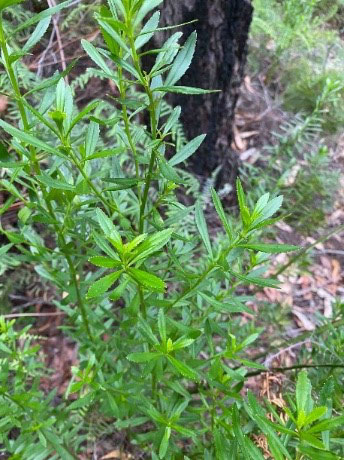
John Martyn has recently been on the hunt to spot these plants in North Turramurra. He described the ones he found as a maze of underground stems or runners that put up a small forest of suckers to around waist height. Its normal setting is below sandstone benches or drop-offs where it seems to like the runoff moisture.
But interestingly, at the site off the Bobbin Head trail there are three distinct sucker clusters that seem to me too far apart for an underground link. One is slightly downstream on a tiny creek line as if seeds (do they exist?) had washed down.
It seems there is more information to be discovered.
Further changes to threatened species management under the EPBC Act
The Morrison government has proposed scrapping recovery plans for almost 200 endangered species and habitats. Recovery plans are documents that set out actions needed to stop the extinction of threatened species. Ministers are legally bound not to make decisions that are inconsistent with them. However there is a huge backlog in the finalisation of recovery plans.
In 2020 the Environment Department revealed to a Senate estimates hearing that not one recovery plan had been finalised for 18 months and more than 170 were overdue, e.g. the Blue Gum High Forest recovery plan that has not been completed over the 14 years since it was declared critically endangered.
Instead of a recovery plan a ‘conservation advice’ is written that does not have the same legal force under national law. This has been possible under changes made to the EPBC Act in 2007.
The species and ecological communities to be given priority for a recovery plan are those that are most frequently affected by development and have often been referred for assessment by the minister as to whether the development should not proceed or conditions should be imposed. A prime example is the Cumberland Plain Woodland because of all the development in western Sydney but it is on the list of ecological communities to be downgraded to a conservation advice.
Another example is Blue Gum High Forest. The data provided only covers sites of BGHF on public land. It is important that the conservation advice also applies to private land such as the Mirvac site that includes about 3 ha outside the demolition area. If the conservation advice does not have the same legal status as recovery plans then we are left with council management policies to ensure that endangered species and ecological communities are protected.
The government is asking for feedback on proposed decisions to abandon recovery plans for 185 species and ecological communities. Consultation closes on 2 November 2021.
Full steam ahead for the Mirvac development at West Pennant Hills
In the previous issue of STEP Matters we provided information on what wasn’t happening with the Mirvac development on the IBM site next to Cumberland State Forest.
A local planning panel meeting was finally held on 15 September to determine whether to approve Mirvac’s development application to demolish the IBM buildings and the surrounding vegetation. There was a large number of passionate speakers opposing the DA.
The chief concern was the clearing of 1,253 trees. There is a basic disagreement as to whether most of this area can be classified as Blue Gum High Forest. Mirvac argued that they were planted as part of the creation of the IBM corporate park. Council documents show that most of the trees had naturally regenerated. But then council determined that it is okay to clear them because of other conditions that will be imposed such as biodiversity offsets, dedication of forest on other parts of the site to management by Forestry Corp (that is, to become part of Cumberland State Forest), some weed clearing and planting a measly 60 trees elsewhere.
Unfortunately, the planning panel approved the DA so, no doubt, the demolition will be starting soon. There were some minor amendments to the conditions of consent. There were no definite assurances that the trees would be checked for nesting birds or nocturnal animals before the clearing takes place.
An attempt was also made to get the clearing of Blue Gum High Forest assessed by the federal minister for the environment as a controlled action under the EPBC Act but that was unsuccessful.
Ku-ring-gai Council consultation process for St Ives Showground and Precinct Lands – should do better
The St Ives Showground and Precinct Lands are a complex mix of developed areas with a long history within a bushland setting including a large area of Duffys Forest endangered ecological community. The Showground itself has been used for agricultural shows since 1927 and as an equestrian showground for almost as long.
During the Second World War it was occupied by the Defence Forces. It contains several heritage buildings and footings for former facilities such as a mess hut and headquarters. Of particular interest is the unique relief map of Ku-ring-gai Chase constructed by army engineers. It would have taken considerable skill to accurately represent the landforms of this rugged bushland area.
The Precinct Lands include the Wildflower Garden and Community Nursery that retain some of the legacy from original uses of market gardening and poultry and pig farming such as dams. The old Green Waste site and the HART Road Safety Centre are part of the precinct but council is not currently Crown Land Manager.
Development and management of various parts of the Showground and precincts have been subject to consultation on options for use and development several times dating back to 1999. Back in 2014 there was a proposal to build a large sports complex on the Council Nursery site with two synthetic fields and an indoor sports centre. This was finally abandoned for cost and environmental reasons.
The management of the area has been complicated because of multiple ownership. Since the Crown Lands Management Act was passed in 2016 many of these issues have been clarified. Ku-ring-gai Council has now been given authority to manage all of the Showground, Nursery and Wildflower Garden sites.
Councils were required to finalise a Plan of Management (PoM) for the Crown Land they manage by 1 July 2021. Ku-ring-gai had received approval earlier in 2021 for the basic aspects of the plan relating to land categorisation. It seems there is some leeway being given to submission of final PoMs as there are a large number of councils with PoMs needing approval. The finalisation process has to comply with the Crown Land Management Act and the Local Government Act 1993.
Rushed consultation
The draft PoM was placed on exhibition with submissions invited to be made with a closing date of 6 August. The last issue of STEP Matters gave a brief outline of the multiple aspects of the plan that the community could comment on, e.g. whether they support or oppose a proposal, have different ideas for an activity, some of the wording of management actions is unclear or the priority is inappropriate.
Many community groups ranging from users of the precinct to environment groups concerned about some proposals and their impact on the area’s bushland put in submissions prior to the deadline. Some groups put in a lot of time working on ideas for improving the facilities and the functioning of the precinct.
But what happened next shocked us and many other groups. Our submissions were made before the deadline of 5 pm, 6 August but the papers for the council meeting that was to consider the draft PoM were published before the closing date. The report had obviously been written by council staff some days before. All the submissions from the community groups, 15 in total, were not considered in the report.
STEP and other groups protested about this treatment. There were no apologies and a curt response that the actions were taken for ‘operational reasons’ that the finalisation of the PoM was urgent. Council needed to get moving with designing the Cultural Environmental and Education Centre before the local government election. The September meeting was not a possibility because the mayoral election was to occur at the meeting. The council PoM had to be submitted to the Minister for Crown Lands for approval as soon as possible for some reason that was not explained apart from the excuse that the minister had lots of plans to approve and the minister had been told to expect this plan in August.
Subsequently council staff did put together a supplementary report with a summary and response to all these submissions. It was added to the meeting papers on the Friday before the meeting on the following Tuesday, 17 August. Of course councillors had less that the normal 14 days to consider all these submissions.
The staff recommendation at the council meeting was for the PoM to be approved subject to the Director, Strategy and Sustainability making a few amendments to the draft clarifying some wording inconsistencies and correcting some names. So that was that!
Neglect of heritage responsibilities
Some submissions pointed out that council had still not implemented resolutions passed back in 2009 accepting recommendations in Philips Marler heritage report that applications be made for state heritage listing of items associated with the agricultural show history and wartime buildings at the Showground and Caleys Pavilion at the Wildflower Garden. This building is a rare example of a small building in the style of the Sydney School of Architecture from the 1950s to 1970s.
At the last minute the councillors agreed to amendments to the PoM to give priority to pursuing heritage listing and preparation of a Conservation Management Plan.
Subsequent information
In further investigation of actions of council staff STEP and Friends of Ku-ring-gai Environment looked into the history of planning actions in relation to the Showground. It seems we were meant to be following the council meetings and know all about some earlier decisions.
The Cultural Environmental and Education Centre had already been designed and costed to go ahead. The location was decided back in May 2019. In June 2021 council resolved to progress to a detailed design. Only internal consultations and a presentation to councillors had been undertaken prior to this June meeting. The only information in the draft PoM was an indication of where the building was to be placed on the site. We were totally in the dark about the design concepts and purposes of the centre.
And yet at the same August meeting council resolved to give the general manager authority to negotiate the finalisation of a quotation for a detailed design for the Cultural Environmental and Education Centre (photo above). At that stage of the meeting the approved PoM that was supposed to be a prerequisite for proceeding with the Cultural Environmental and Education Centre had not been considered by the meeting.
Another development was announced early in September, the Tree Tops High Ropes Course. The site was indicated in the draft PoM but that is about all we know. Has there been an environmental assessment for the site that is mapped as Duffys Forest endangered ecological community?
Public consultation has been a sham.
The hurried process of consultation has left interested community groups feeling as if senior council staff have their own agenda that will be pushed through and community views can be ignored. However once we knew more of the background story it seems the main issue is poor communication. Staff were being asked to prepare a complex document in a shortened timeframe and details were left out of previous decisions.
Earlier consultation and information sessions for the community should have been undertaken. The draft PoM document stated that consultation had taken place but it seems this involved just a few paying users of the facilities. There will be several plans to be written in the future such as the Conservation and Biodiversity Management Plans and detailed masterplans. The draft PoM listed several possibilities of future facilities and developments that will be covered by specific plans. We would like to see plans for the community nursery site announced soon as some buildings are deteriorating fast.
We hope the consultation on these plans is carried out in a constructive manner. We are still not sure about the legitimacy of the approval of the Cultural Environmental and Education Centre and high ropes course under the Crown Lands Management Act 2016.
Weeds in national parks along sewer lines, energy transmission lines
My concern is that weeds occur along all land that has been disturbed in otherwise pristine bushland areas. These are unsightly and continually invasive.
For example, the sewer lines constructed through Sydney in the 1950s and 60s have much unfinished business in bushland areas where the mains have been constructed.
Sydney Water, and before it, the Sydney Water Board never finished the environmental work of restoring the iconic bushland of the Sydney Basin; all part of the world-renown Sydney Bioregion. Custodial responsibility means carrying out work to ensure that environmental repairs are undertaken in a timely manner to sustain ecological integrity.
More than 20 years ago Sydney Water played an important and effective role in the active catchment management committees (CMCs) which were set up by the NSW Government. I know this because I was deputy chair of the Lane Cove River CMC. CMCs and CMAs were set up as a consequence of concerns from my then local MP, who was The Hon Tim Moore.
It is even more important in present times that these matters of concern then be reactivated. CMCs need to be reactivated and incorporate members of all government entities implicated. Untreated weed outbreaks do not disappear over time; they tend to exacerbate. This also means energy authorities, such as Ausgrid and the Roads and Maritime Services.
My recent walks in the Lane Cove National Park attest to this. Roads and Maritime Services are apparently doing nothing in the area around de Burghs Bridge and the former bridge.
All public authorities who do construction work through bushland must be held environmentally responsible for ensuring regeneration work in the areas disturbed; or previously disturbed, until they again become ecologically stable.
As a former teacher of bush regeneration at TAFE, it is clear to me that there are on-going responsibilities that have not been addressed. All these major service providers have the capacity to pay. There is no excuse for walking away from land management obligations. Especially in pristine natural bush. This applies to all areas that have had physical disturbance and on-going access by vehicles that carry weeds in their tyre treads, etc.
Such environmental work should not be left to the National Parks and Wildlife Service to do the ‘cleaning-up’.
Please inform me of the present status of environmental responsibility within Sydney Water, energy authorities and Roads and Maritime Services, especially with regard to assessment, action and monitoring, until an ecologically functional and stable state is reached and maintained over time.
I realise this will require a whole new approach and will require service providers to environmentally Care for Country. It must be done together with local government.
However, it MUST be done.
This is a letter sent to the Minister for the Environment, Matt Kean, by Janet Fairlie-Cuninghame. Janet is highlighting a problem that is very evident when walking along creek lines. We hope she receives a constructive response. National Parks staff have a huge job to do currently with so many people using national parks for recreation. This is also an expensive issue for local councils.
What does net zero greenhouse gas emissions actually mean?
Under the Paris climate change agreement the majority of countries have made pledges to get their greenhouse gas emissions down to ‘net zero’ by 2050 with the hope of keeping the global average temperature increase below 2°C and, preferably, no more than 1.5°C.
Australia is still an appalling laggard with no commitment by the Morrison government or any plan to achieve a goal of any sort. The commitment for 2030 of a reduction of 26 to 28% below 2005 levels is also being eclipsed by stronger commitments being made by many developed countries.
The world still has a long way to go to get to net zero. Many scientists are calling for a much faster reduction. The average global temperature has already increased by 1.1°C since pre-industrial levels and Australia’s increase is 1.44°C since 1910 when reliable data is available. It seems that reaching 1.5°C is inevitable so the Glasgow meeting is crucial to put in place actual policies, not just pledges, that will have provide a high probability that we won’t get beyond 2°C. Every fraction of a degree counts.
Definition of net zero
Net zero emissions describes the point in time when humans stop adding to the burden of climate-heating gases in the atmosphere. It refers to achieving an overall balance between greenhouse gas emissions produced and greenhouse gas emissions taken out of the atmosphere. The level of balance was approximately at the time before the world started burning coal during the 18th century. The level of CO2 then was about 280 ppm. It is now about 417 ppm. Actual worldwide CO2 emissions are currently about 35 billion tonnes pa. The net effect of the natural land and ocean absorption processes leaves the situation where the CO2 concentration in the atmosphere is still increasing, by 2.4 ppm pa over the past decade.
This data does not include emissions of the greenhouse gases methane and nitrous dioxides that have strong effects of atmospheric warming but are dissipated by chemical reaction relatively quickly. The following information focusses on CO2 emissions because they remain in the atmosphere for hundreds of years.
Getting to net zero means we can still produce some emissions, as long as they are offset by processes that reduce greenhouse gases already in the atmosphere. For example, these could be things like planting new forests, or drawdown technologies like direct air capture.
However, to meet the goal of net zero, new emissions of greenhouse gas must be as low as possible. This means that we need to rapidly phase out fossil fuels – coal, oil and gas – and transition to renewable energy.
Climate change isn’t a tap we can turn off once we stop using fossil fuels. Carbon dioxide, the main contributor to climate change, will stay in the atmosphere and keep heating the planet for years and years. As the data above shows there is already an excess quantity of greenhouse gases in the atmosphere that are having an impact on our climate so that we actually need to remove the excess in order to stop further increases in temperature and other effects of climate change.
Carbon offsetting options
Currently the main method of reducing emissions, called carbon offsetting, is planting trees. A massive area of land would be needed to make a big difference to total emissions. As a forest ages, it reaches what ecologists call a ‘steady state’ – this is when the amount of carbon absorbed by the trees each year is perfectly balanced by the CO₂ released through the breathing of the plants themselves and the trillions of decomposer microbes underground. So new areas will need to be planted out every year as emissions remain positive.
The calculation of the carbon content of a tree cannot be accurate unless the tree is pulled out of the ground so approximations are needed. Also the growth of each tree is non-linear, starting slowly and then the greatest sequestration rate is in the younger stages of tree growth, depending on rates and peaks of individual species, with the sequestration of CO2 per year dropping thereafter. The usual method is to choose the appropriate time scale and average the amount of carbon stored over that period.
Multiple factors such as growth conditions are at play so there is still much research needed into more accurate calculations. Of course the basic assumption is that the trees will remain standing. They won’t be burned down or degrade through drought of insect attack.
Once trees reach maturity they need to be locked away and then new areas need to be planted if more emissions need to be offset.
There are lots of other schemes for reducing emissions. The federal government is supporting ideas like carbon farming, avoided reforestation and land restoration.
A large market has developed for carbon credits that are calculated under schemes developed by under the UNFCCC. Some of these are available to governments and are popular with companies and individuals wanting to offset their emissions. The credits are sold by organisations that are running projects that reduce emissions, for example by supporting renewable energy in developing countries.
Have any countries or Australian states reached net zero emissions already?
Five countries have a net-zero target in place by law: Sweden, the United Kingdom, France, Denmark and New Zealand.
Closer to home, some of the states and territories are doing well. Australia’s states and territories all have net zero targets, but most governments have not outlined how these targets will be met. Tasmania has been net zero in some individual years. In 2014 and 2018, Tasmania’s emissions dropped below net zero thanks to Tasmania’s massive hydroelectric dams, and massive carbon-dense forests. With the state’s electricity supply already nearing 100% renewable, the remaining emissions from the state – across transport, manufacturing, agriculture and forestry – were offset by the greenhouse gases sucked out of the atmosphere by the state’s forests.
A target is only as good as the policies underpinning it. Several governments with a net zero goal, such as Western Australia, Northern Territory and Queensland, are still increasing their emissions each year. Even governments that are leading the pack when it comes to climate action – like South Australia and the ACT – still have more work to do to outline how they will meet their net zero goals.
The big concern is there are still new coal mining and gas projects being developed. It all seems very hypocritical for NSW to be supporting the Santos Pilliga gas project and mine expansion.
Springtime orchid discoveries
We have all been out and about this spring and have made some new discoveries of orchids, some quite rare and usual.
The photos above (Calochilus paludosis and Caladenia catenata) were taken by Fran Rein
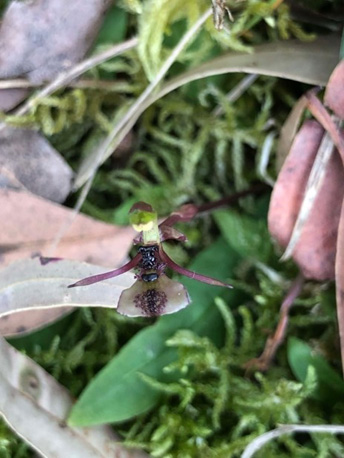
Ant orchid, Chiloglottis formicifera, a tiny orchid in West Pymble
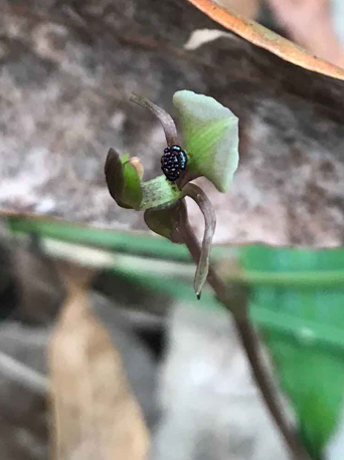
Broad-lip Bird Orchid, Chiloglottis trapeziformis, rare in the Lane Cove Valley (photo – Sandra Shergill)
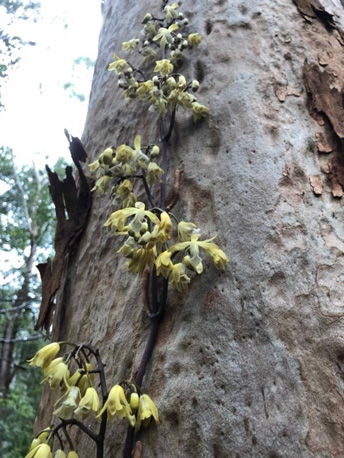
The spectacular Bootlace orchid, Erythrorchis cassythoides in Sheldon Forest. This is one of only two species in the world. It climbs trees by means of short stiff hooked roots. Pollination is by native bees attracted to the flowers’ perfume. This one has climbed about 5 m.
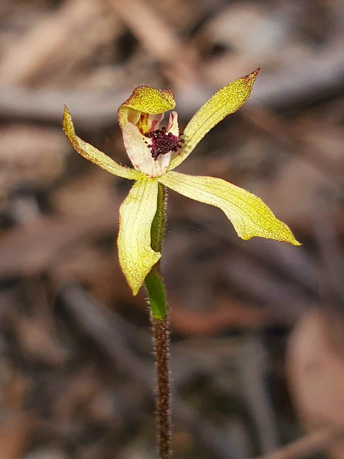
Green caps, Caladenia transitoria, a tiny orchid with flowers about 2 cm wide. It has a short flowering period, hence its name. A rare find in West Pymble (photo: Michael Gillings)
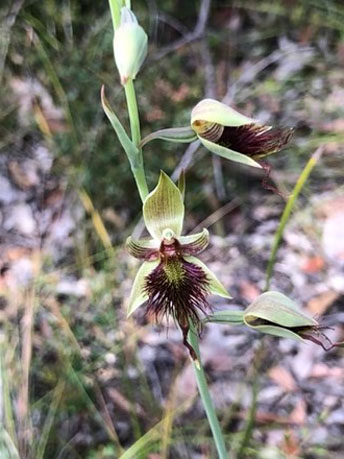
Red bearded orchid, Calochilus paludosis, on the Murrua track
Our activities in 2021
Although most of our walks and talks have had to be cancelled there has been lots of activity behind the scenes.
Walks
Walks were scheduled for every month but either the weather or COVID intervened so the only walks held were on 21 March (Pennant Hills Park), 21 April (Lawson), 24 April (Sheldon Forest Heritage Walk), 23 May (St Ives Showground), 20 June (Devlins Creek, rain affected but still went ahead) then the COVID lockdown hit. Somehow these activities feel to have been in the dim distant past.
Talks
We finally managed to hear Prof Culum Brown’s talk on shark behaviour after it had been postponed by the South Turramurra bushfire in 2019 and then COVID in 2020. A summary of Culum’s talk is in STEP Matters, May 2021 issue.
Talks on Julian’s Hibbertia and Gondwanan Plants of the Sydney Region have had to be cancelled.
Submissions
There has been plenty of work to do preparing submissions of local issues and plans.
- March – Barra Brui synthetic turf proposal
- May – Eden Gardens high rise development
- May – Hornsby Park and Westleigh Park masterplans
- June – Gordon Flying Fox Reserve Plan of Management
- June – Northern Beaches Tunnel and links
- June – Mirvac demolition DA
- July – proposed sale of Bales Park, Roseville
- August – St Ives Showground draft Plan of Management
- September – Mirvac EPBC referral
- September – Ku-ring-gai fauna management policy
- September – Hassall Park redevelopment
Survey of candidates in Hornsby and Ku-ring-gai
To help STEP members learn more about the environmental credentials of candidates in Hornsby and Ku-ring-gai we sent them a survey.
We contacted 49 candidates (all those who gave their email to the Electoral Commission) and we received ten responses (one from Hornsby and nine from Ku-ring-gai).
Responses
Click on the links below to see what the prospective councillors have to say, and click here to compare answers.
- Hornsby (Ward A) — Mick Marr (Group B)
- Ku-ring-gai (Comenarra) — Jayamala Gupte (Group D),
- Ku-ring-gai (Comenarra) — Trish Lynch (Group A),
- Ku-ring-gai (Comenarra) — Greg Taylor (Group F)
- Ku-ring-gai (Gordon) — Simon Lennon (Group B)
- Ku-ring-gai (Roseville) — Carmel Heffernan (Group D)
- Ku-ring-gai (Roseville) — Sam Ngai (Group B)
- Ku-ring-gai (Roseville) — Alec Taylor (Group A)
- Ku-ring-gai (St Ives) — Amanda Brien (Group D)
- Ku-ring-gai (Wahroonga) — Sheri Evans (Group F)
Questions we asked
- There are community concerns about urban heat, and the environmental and social impacts of the installation of synthetic turf on local ovals. What are your views on this?
- What’s your view on mountain bikers constructing their own new tracks through bushland?
- The NSW government wants to increase tree canopy cover in Greater Sydney from 16% to 40% by 2030. However, development as a result of population growth, subdivision, larger house footprints etc means that we continue to lose tree cover. Will you work to increase tree canopy?
- Do you support council’s environmental management policies, e.g. the biodiversity and water sensitive cities policies?
- Council does not have the financial resources to maintain effective firebreaks around all of the bushland boundaries of properties. Are you in favour of council developing a set of protocols so that qualified residents or their contractors are able to maintain their own boundaries?
- Some councils have resolved to dispose of surplus parcels of land behind closed doors. Will you undertake to make all such proposals transparent and invite community involvement?
- Some councils have not followed due process when asking for stakeholder feedback on a project. Would you take steps to ensure that all public consultation processes are carried out in an orderly and transparent manner?
- Do you think council should do more to encourage residents to reduce waste going into landfill?
- Council has resolved to reduce greenhouse gas emissions from its own operations and by the community to net zero by 2040 with an interim objective of a reduction of about 50% by 2030. Do you consider that enough action is being taken to achieve these goals?
- Is there anything you’d like to add?

